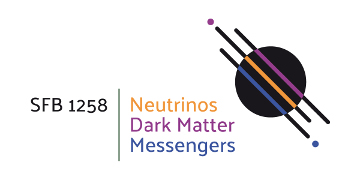N01 - Neutrino mass and nature: neutrinoless double beta decay - towards LEGEND-1000
One of the most fascinating questions in neutrino physics is whether neutrinos are their own antiparticles — so-called Majorana particles, an idea that dates back to the 1930s. To confirm or refute this possibility, physicists are searching for neutrinoless double beta decay, a hypothetical process that has yet to be observed.
It all began with the concept of a two-neutrino double beta decay (2νββ), first considered by Maria Göppert Mayer in 1935. In this process, two neutrons within a nucleus simultaneously decay into two protons, accompanied by the emission of two electrons and two antineutrinos
(A, Z) → (A, Z + 2) + e- + e- + -ve + -ve
Two years after Göppert Mayer, Ettore Majorana proposed a new theory of neutrinos, with neutrinos being their own antiparticles. The only feasible way that physicists have come up to prove this far-reaching conjecture is the neutrinoless double beta decay (0νββ):
(A, Z) → (A, Z + 2) + 2 e-
While the simultaneous emission of two electrons and two antineutrinos in the two-neutrino double beta decay (2νββ) conserves lepton number and is permitted within the Standard Model of particle physics, the neutrinoless double beta decay (0νββ) is forbidden, as it violates lepton number conservation by two units. Observing 0νββ would therefore provide direct evidence of lepton number violation in nature and prove that neutrinos are Majorana rather than Dirac particles.
The LEGEND collaboration is pursuing one of the most ambitious goals in particle physics today: the detection of neutrinoless double beta decay (0νββ), a rare nuclear process whose observation would confirm that neutrinos are their own antiparticles—so-called Majorana particles. This discovery would have profound implications, revealing that lepton number is not conserved and offering new insights into the origin of neutrino masses and the fundamental structure of matter.
The most advanced phase of this international effort is the LEGEND-1000 project, which aims to construct a large-scale detector containing one tonne (1,000 kilograms) of ultra-pure germanium, enriched in the isotope germanium-76. The experiment will be hosted at the Gran Sasso Underground Laboratory in Italy, a world-leading site for low-background physics.
Building on the successes of its predecessor experiments—GERDA and the MAJORANA DEMONSTRATOR—LEGEND-1000 will use state-of-the-art detector technologies immersed in liquid argon, which simultaneously cools the system and shields it from environmental radiation. This design is intended to achieve unprecedented sensitivity, capable of detecting decay processes with half-lives greater than 10²⁸ years, vastly exceeding the age of the universe.
Germany’s Key Role: The N01 Project at TUM
The N01 project at the Technical University of Munich (TUM) plays a central role in preparing the LEGEND-1000 detector. Between 2017 and 2021, N01 researchers significantly contributed to the LEGEND roadmap, including the realization of LEGEND-200, a smaller-scale demonstrator that paved the way for the current phase.
Current efforts at TUM focus on developing a low-background detector assembly for LEGEND-1000. This includes advancements in readout electronics, the selection and testing of novel ultra-pure materials, and cryogenic tests carried out at the SCARF laboratory. The next major milestones are finalizing the detector design, validating components under realistic conditions, and commencing underground construction in 2025.
The long-term objective of N01 is to achieve the ultra-low background levels required to detect 0νββ events. Success would translate to sensitivity for Majorana neutrino masses below 20 meV, marking a major step toward resolving one of the most fundamental questions in neutrino physics.
A Scientific Quest Decades in the Making
The roots of this scientific journey trace back to 1935, when Maria Göppert Mayer first proposed the concept of two-neutrino double beta decay (2νββ). In this Standard Model-allowed process, two neutrons in a nucleus decay into two protons, emitting two electrons and two antineutrinos:
(A, Z) → (A, Z+2) + 2e⁻ + 2ν̄ₑ
This process conserves lepton number and has been experimentally observed. However, just two years later, Ettore Majorana proposed the idea that neutrinos could be their own antiparticles—a revolutionary concept implying that a neutrinoless version of the decay might also exist:
(A, Z) → (A, Z+2) + 2e⁻
Such a process would violate lepton number by two units and is strictly forbidden in the Standard Model. Its observation would not only confirm the Majorana nature of neutrinos but also provide a window into the absolute neutrino mass scale and the mass ordering. In the standard interpretation, the half-life of 0νββ decay is directly related to the Majorana mass of the neutrinos, meaning that precise measurements could uncover the neutrino’s role in the broader puzzle of the universe’s matter-antimatter asymmetry.
A Transformative Discovery Awaits
Detecting neutrinoless double beta decay would be nothing short of a paradigm shift in particle physics. LEGEND-1000, with its ambitious scale, precision design, and strong international collaboration, is uniquely poised to make this discovery possible. Through its leadership in the N01 project, the Technical University of Munich stands at the forefront of this groundbreaking research—helping to answer one of the most profound and long-standing questions in science: Are neutrinos their own antiparticles?



